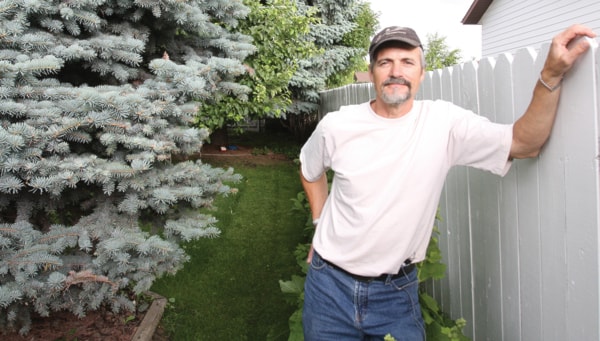A Morrisroe resident accuses the City of Red Deer of a cash grab by asking homeowners to pay almost a 10-fold increase for public utility lot leases they have looked after for several decades.
Larry Mazzei received a letter recently from the city, indicating a recommended agreement and fee increase where property owners could soon be charged $250 per year.
They must also get $2 million in liability insurance, naming the City of Red Deer as additionally insured. Presently, owners pay $30 a year and no extra insurance is required.
Mazzei and others must have the new agreements signed by Oct. 6.
“The city has had these (public utility lots) maintained by (property owners),” Mazzei said. “What are they going to do now? Make me put a fence in here? Deface all these subdivisions?”
When Mazzei and his wife moved to 47 Martin Close 15 years ago, there were three bigger trees on the public utility lot, located at the back of his house.
Several decades ago when subdivisions were built up, easements were set aside that are shared by city services and utility services.
Mazzei said he believes the city might have approached residents with property adjoining easements because it would have been cheaper to have residents maintain them. Residents could look after the dandelions and so on, Mazzei said.
The easement on his property is nine metres wide by 30 metres long.
Mazzei believes charging owners so much more is just the city’s way of making a lot of money.
“Plus, you have to put on $2-million liability,” he said. “Why am I still liable if it’s not part of my title? If you want to give me title, sell it to me for $250, then I’ll pay my liability.”
He figures it’s possible for properties to be sold six or seven times and during that time, the new buyer may not be aware that some of their yard is actually a public utility lot. Rose gardens may be put in, trees and so on, Mazzei said.
He said he’d like to see the issue go before city council to see if lots like his should be grandfathered or excluded from the new agreement.
“Don’t burn the people from 40 years ago! You already made an agreement with them,” Mazzei said.
Land and Economic Development Department manager Howard Thompson said council approved his department’s 2011 budget, which contemplated the fee increases. But he said that council will receive a report at the end of August on whether to set the proposed rates or change them.
“So even though we sent out these letters, this will be something that will be reviewed in a report to council,” said Thompson.
Thompson said the public utility lots were built because underground services exist there.
In some instances, they are leased out. About 90 to 100 of these are leased out in Red Deer, Thompson said.
“Even with the existing agreements, people aren’t supposed to be planting there,” Thompson said. “It’s supposed to be green space and it can be fenced in (by leaseholders).”
People are not being solicited to be a part of these new agreements but may apply to the City of Red Deer to use the city land. If they don’t want to lease it anymore, it would go back to its original condition, he said.
“We would maintain it like any other open space,” said Thompson.
He said the city is prepared to step in and look after all of these public utility lots, including mowing the lawn and doing dandelion control. The lessee would have to remove their fencing if they don’t want to continue to lease, he said.
Existing agreements are explicit about what is not allowed on these lots, Thompson added.
Removing trees would be done on a case-by-case basis, he added. The city needs access to the utilities at any time, he added.
The $2-million insurance is important because it’s public land and if there are incidents on land, the insurance would protect taxpayers, he added.
Thompson said the city has its own insurance. The insurance is necessary because a private landowner is using public land. Typically they would have insurance on their own home anyways, so they would add the city as an additional insured, Thompson said.
And he added it’s a common practice on all other leases of public lands.
“We’re essentially letting people rent these public lands and it’s been quite a while since we reviewed those rates,” Thompson said. “We’re just trying to reflect the current market.”
Some communities don’t lease out these spaces at all, Thompson said.
Thompson said the public utility lots are worth a lot more than $250, so it wouldn’t be possible to sell the land to homeowners for that price.
ltester@www.reddeeradvocate.com
